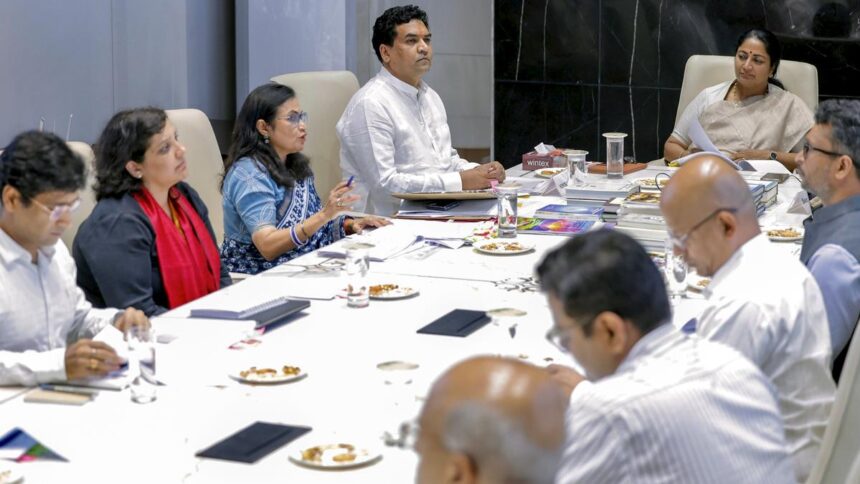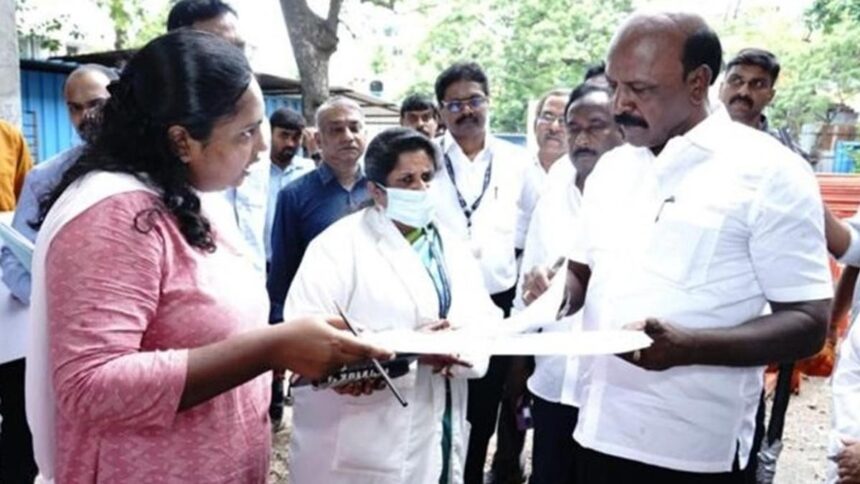
Benno Boer (UNESCO) and Raman Sugumar specking at the NiligiriScapes conference at RCTC hall in Udhagamandalam on Thursday.
| Photo Credit: SATHYAMOORTHY M
Steps must be taken to restore mid-elevation rainforests at Gudalur in the Nilgiris and Anaimalai in Coimbatore, which were wiped out to make way for tea estates in the region, said renowned ecologist, Raman Sukumar, in Udhagamandalam in the Nilgiris on Thursday.
Speaking at the NilgiriScapes conference that began in Udhagamandalam on Thursday, Mr. Sukumar, one of the main speakers on the first day of the three-day conference, said that mid-elevation rainforests had been completely decimated as the government planted tea in their stead as part of setting up TANTEA – to provide livelihoods for Sri Lankan repatriates who were brought back to India as part of the Sirima-Shastri Pact, signed between India and Sri Lanka in 1964.
Mr. Sukumar said that in order to ensure the preservation of the Nilgiri Biosphere Reserve, it was important that tea estates be rolled back, and that the government also needed to restore grasslands and Shola forests while ensuring that the voices of indigenous communities are heard.
The ecologist who is also one of the foremost elephant experts in the country, said that the “Biosphere Reserve as a concept needs to takeover,” adding that there needs to be a reconciliation between balancing conservation with development.
Earlier in the day, Jane Goodall, zoologist, primatologist and anthropologist, delivered a video message at the conference. “I have never been to the Nilgiri Biosphere Reserve, but have learned from friends about how important it is environmentally as well as culturally,” said Ms. Goodall. She lauded the goals of the conference in bringing together stakeholders in raising awareness among governments and local communities about protecting the environment.
Prannay Lal, author of “Indica: A Deep Natural History of the Indian Subcontinent” delivered a lecture exploring the geological makeup of the Nilgiris. In his talk, titled “What natural history tells us about the Nilgiri hills,” Mr. Lal spoke in detail about the geological processes that culminated in the formation of the Nilgiris and the Indian subcontinent as a whole. He also delved into case studies of landslips in the Nilgiris, such as the one that occurred in Marapallam in 2009, and the variables that city and town planners as well as urban developers should consider while planning new infrastructure projects in the Nilgiris.
Benno Boer, Chief of the Natural Sciences Unit at UNESCO, New Delhi, and Lakshmi Bhavya Tanneeru, District Collector of the Nilgiris, took part.
Published – August 21, 2025 07:41 pm IST




















